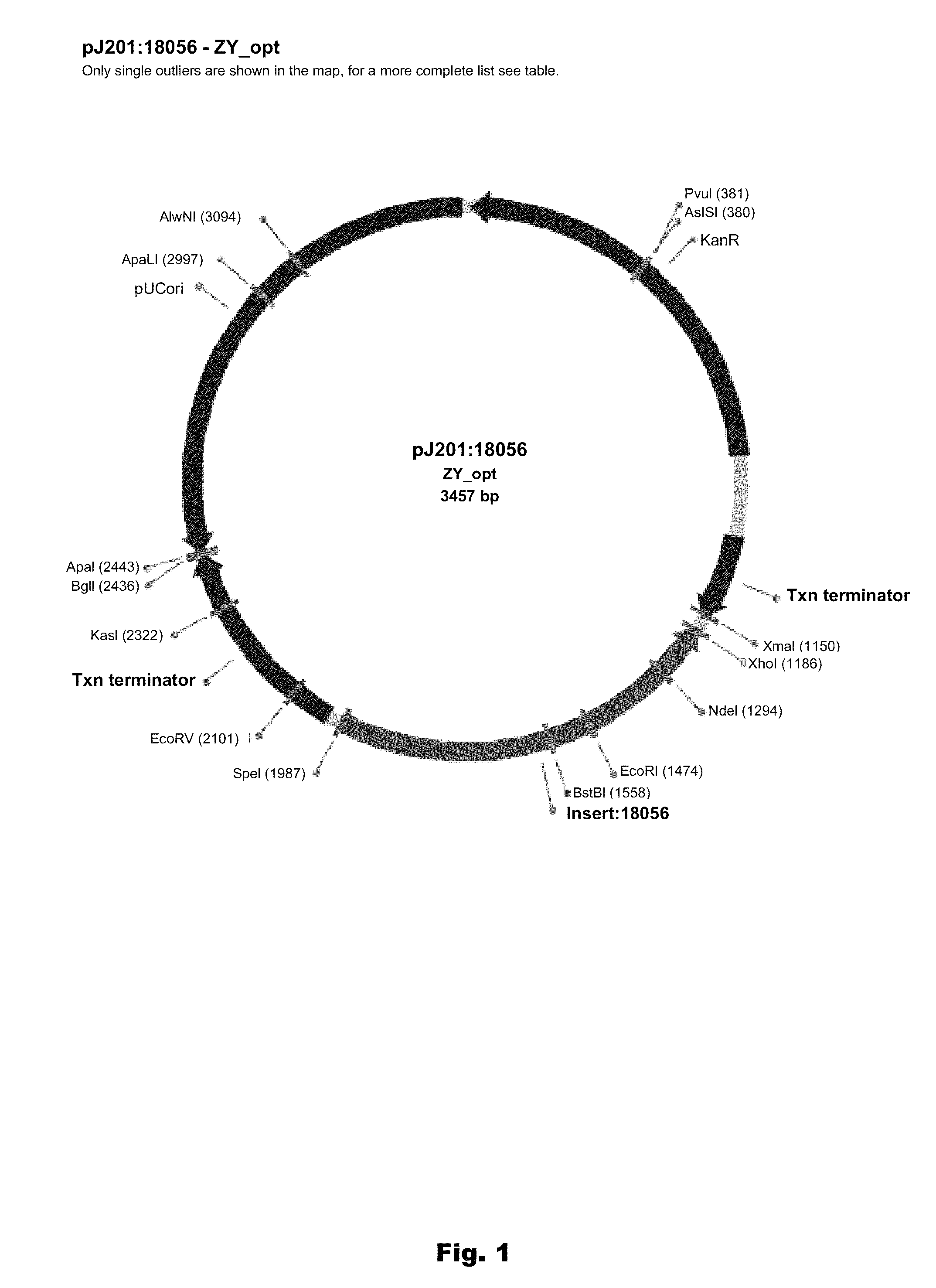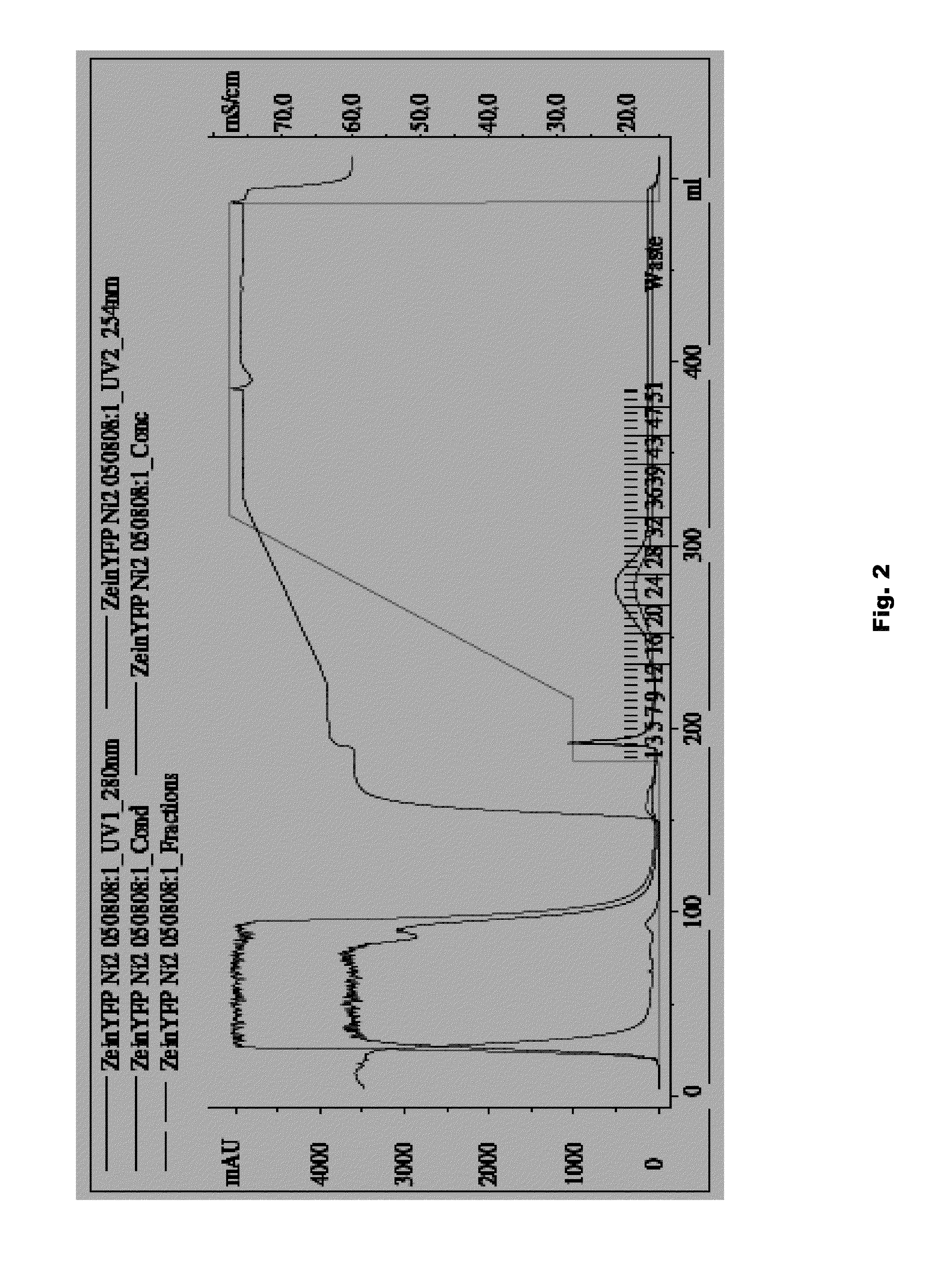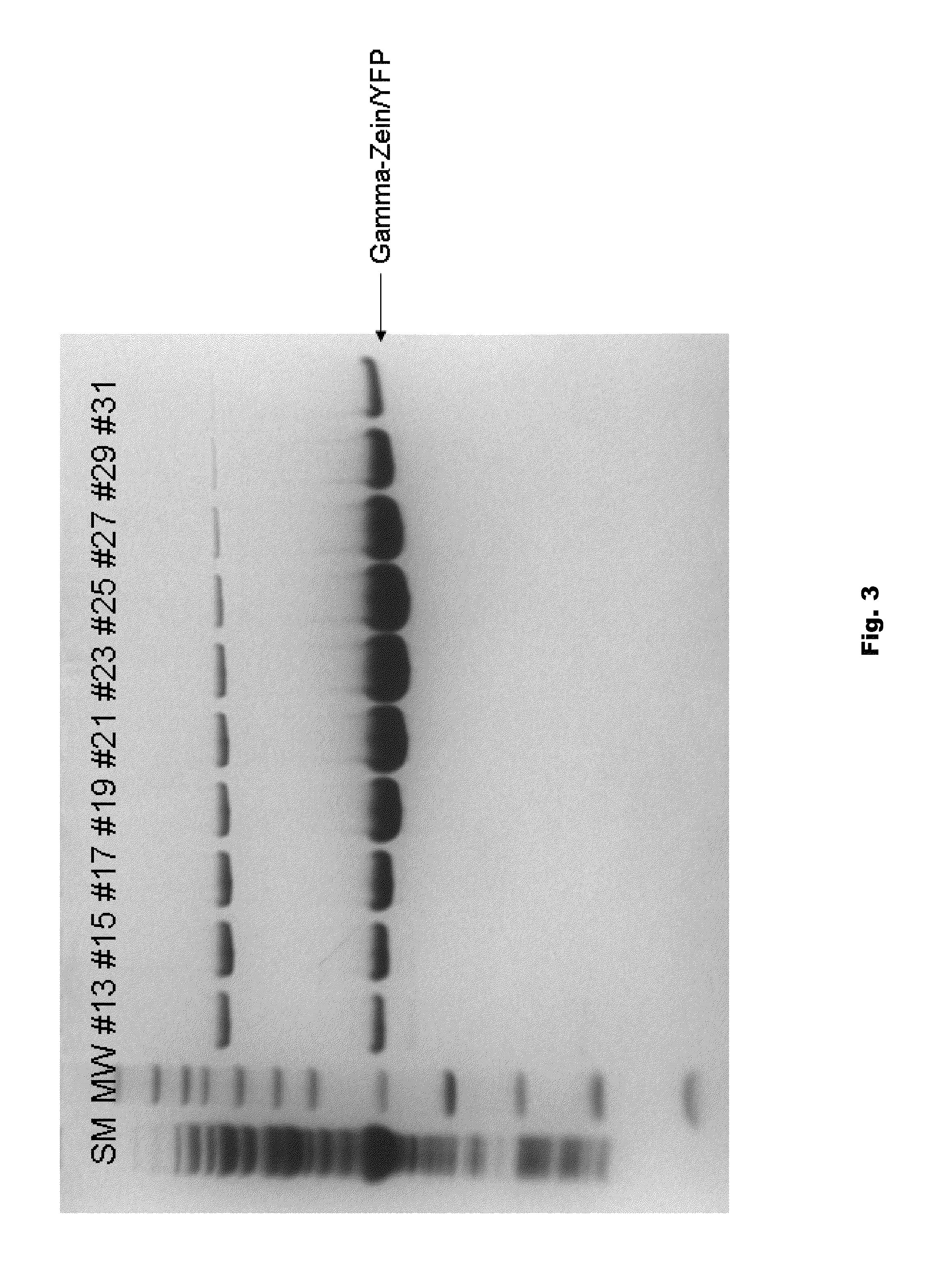Plant peptide gamma-zein for delivery of biomolecules into plant cells
a plant cell and peptide technology, applied in the field of plant peptide gammazein for the delivery of biomolecules into plant cells, can solve the problems of time-consuming and unpredictable plant breeding strategies to develop new plants with particular traits, and the use of cpp in plant cells for transfection studies is limited
- Summary
- Abstract
- Description
- Claims
- Application Information
AI Technical Summary
Problems solved by technology
Method used
Image
Examples
example 1
Construction of Gamma-Zein / YFP Fusion Protein
[0088]A DNA sequence encoding a modified Zea mays N-terminal region of gamma-zein protein (GenBank Accession# AAL16977.1, GI:16305109) was fused to the N-terminus of the Philadium Yellow Fluorescence Protein (YFP) (Evrogen, Moscow, Russia). The gamma-zein motif of six amino acids was modified, wherein the second residue was changed to arginine from histidine. This modification was made to direct the fusion sequence to the nucleus. Arginine has been shown to improve the efficiency of protein translocation into the cytosol and nucleus of a cell. (Mitchell, et al., (2000), The Journal of Peptide Research, 56 (5): 318-325). A trimer of the modified six amino acids (VRLPPP) of the N-terminal region of gamma-zein was fused to YFP. Additionally, a 6×-His tag was placed between the gamma-zein trimer and the YFP coding sequence. The 6×-His motif was added to facilitate protein purification. The amino acid sequence of this fusion protein is present...
example 2
Preparation of Single Cell Plant Material
2.1 JTNT1 Cells
[0095]JTNT1 cells are photoautotrophic cells isolated from tobacco. Three to four days prior to transformation, a suspension culture was subcultured to fresh medium by transfer of 2 ml of JTN1 cells into 40 ml of NT1B or LSBY2 media containing 50 nM DAS-PMTI-1 (a microtubule inhibitor) and 0.5-0.1% (v / v) DMSO in a 250-ml flask. Single cells were collected either at four days or seven days after the microtubule inhibitor treatment (as described in, for example, WO 2008 / 083233, the entire content of which are hereby incorporated by reference). The cells were maintained in minimal medium and 5% carbon dioxide. The cells were sub-cultured once every 14 days by transferring 1 ml of suspension at O.D.600 3.0. These cell types were used as target cells for delivery and localization of gamma-zein / YFP fusion peptide.
2.2 Carrot Cells
[0096]A regenerable carrot cryopreserved line (D2-40-018) was thawed and cultured in Linsmeier-Skoog (LS) ...
example 3
Gamma-Zein / YFP Fusion Protein Treatment of Cells
[0097]The cells were pre-stained with 15 μg Hoechst for 10 min at 37° C. After the incubation period, the excess stain was removed. The cells were centrifuged at 4000 rpm for 5 minutes and the supernatant was discarded. The cells were washed three times with a 1 ml solution of PBS containing 3% sucrose.
[0098]The gamma-zein / YFP fusion protein was added at a 50 μM concentration to 1 ml of carrot single cells or JTNT1 cells within an eppendorf tube. The tubes were placed on a shaker at 100 rpm at 25° C. for 60 minutes.
PUM
| Property | Measurement | Unit |
|---|---|---|
| size | aaaaa | aaaaa |
| median diameter | aaaaa | aaaaa |
| median diameter | aaaaa | aaaaa |
Abstract
Description
Claims
Application Information
 Login to View More
Login to View More - R&D
- Intellectual Property
- Life Sciences
- Materials
- Tech Scout
- Unparalleled Data Quality
- Higher Quality Content
- 60% Fewer Hallucinations
Browse by: Latest US Patents, China's latest patents, Technical Efficacy Thesaurus, Application Domain, Technology Topic, Popular Technical Reports.
© 2025 PatSnap. All rights reserved.Legal|Privacy policy|Modern Slavery Act Transparency Statement|Sitemap|About US| Contact US: help@patsnap.com



